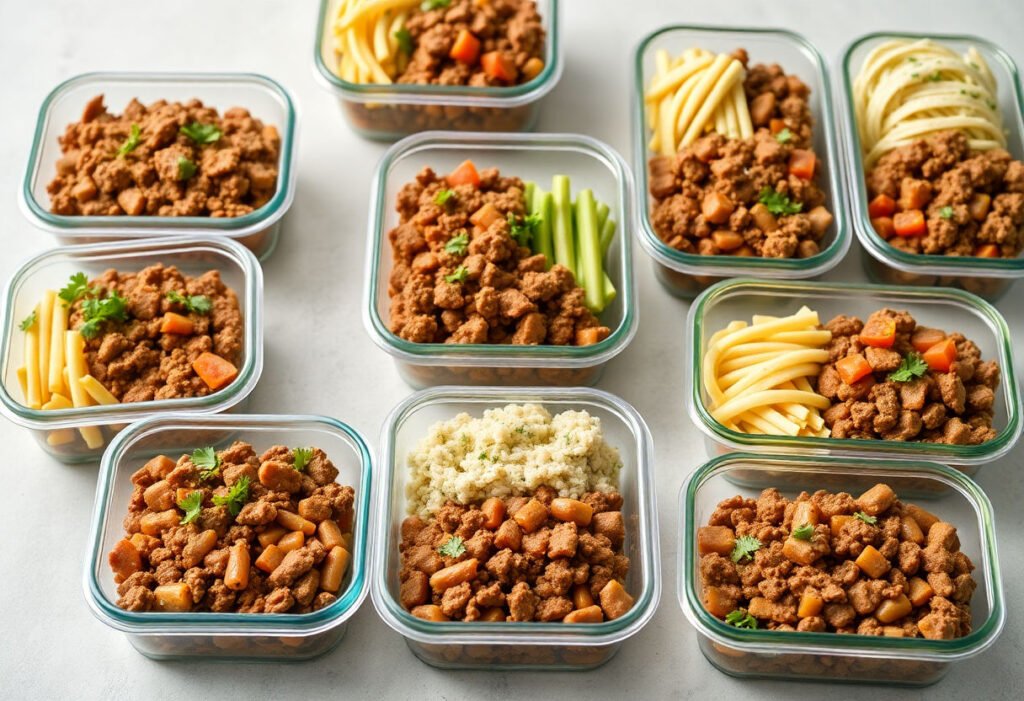Protein is an essential nutrient crucial for muscular development, tissue repair, and overall health maintenance. In the quest for a balanced diet, integrating high-protein sources like ground beef can prove invaluable, especially for meal prepping enthusiasts. Ground beef stands out as a convenient, versatile, and rich source of protein, making it an ideal ingredient for preparing meals in advance. This article delves into the nutritional benefits of ground beef, offers practical tips on selection, provides easy-to-follow recipes, and explores innovative ways to incorporate it into a balanced diet. Discover how ground beef can simplify your weekly meal planning while maximizing your protein intake.
Key Takeaways
- Ground beef offers a convenient and versatile protein option for meal prep, fitting seamlessly into a balanced diet.
- With its high protein content, ground beef helps support muscle growth and repair, making it ideal for active individuals.
- Meal prepping with ground beef saves time during the week, allowing for quick and nutritious meals without compromising on taste.
- Various forms of ground beef accommodate different dietary preferences and needs, enhancing meal plan diversity.
- Creative ground beef recipes can prevent meal fatigue by offering innovative ways to enjoy a staple protein source.
Nutritional Benefits of Ground Beef
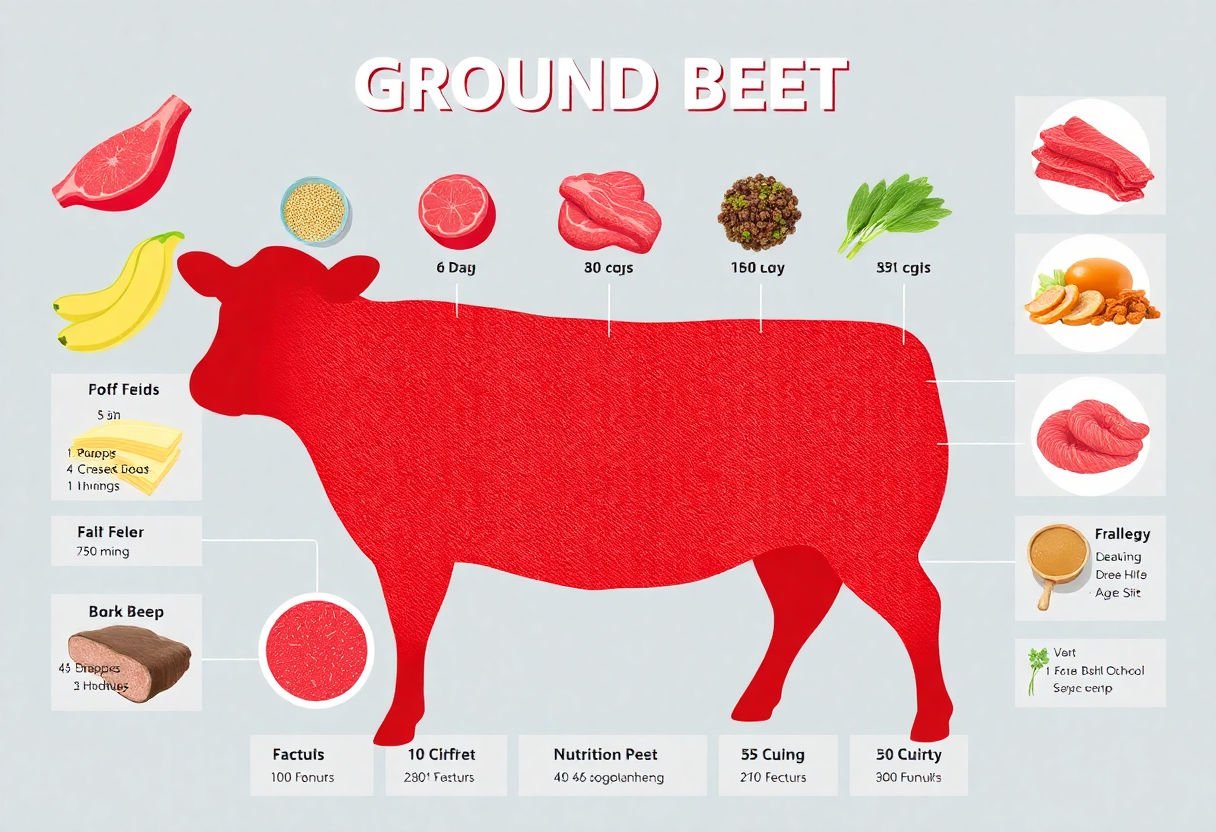
Ground beef stands as a staple in many kitchens due to its impressive nutritional profile. Rich in protein, it is a valuable source for building and repairing tissues, making it essential for muscle development. An ounce of ground beef typically contains about 7 grams of protein, contributing significantly to the daily protein requirement of adults.
Beyond protein, ground beef offers a wealth of essential vitamins and minerals. It is particularly rich in Vitamin B12, which is crucial for nerve function and the formation of red blood cells. Ground beef also provides iron — vital for preventing anemia and ensuring oxygen is efficiently transported throughout the body.
Moreover, it is a source of zinc, which supports a healthy immune system and aids in cell growth and division. Other nutrients found in ground beef include phosphorus, which promotes healthy bones and teeth, and selenium, an antioxidant that helps protect cells from damage.
When consumed as part of a balanced diet, ground beef can offer these nutritional benefits while providing the versatility needed for various meal preparations. Opting for lean cuts can help reduce the intake of saturated fats, aligning with dietary guidelines. By incorporating ground beef into your meal prep routine, you can ensure a consistent intake of these nutrients, supporting overall health and well-being.
Choosing the Right Ground Beef

When selecting ground beef for meal prep, understanding the different types and their benefits is crucial. Not all ground beef is created equal; the main variations are based on fat content. Ground beef typically comes in three main types:
- Ground Chuck: This option generally contains around 80% lean meat and 20% fat. It’s prized for its rich flavor and juiciness, making it ideal for burgers and meatloaf.
- Ground Round: A slightly leaner choice, usually comprising 85% lean meat and 15% fat. It offers a good balance of flavor and reduced fat, perfect for casseroles and meatballs.
- Ground Sirloin: Characterized by being the leanest of the three, often around 90-92% lean. It is a healthier choice with lower fat content, suitable for tacos and stir-fry dishes.
When choosing the right ground beef, consider your dietary needs and the recipe requirements. Those aiming to reduce calorie intake may prefer ground sirloin, while ground chuck can be more suitable for recipes requiring moisture and flavor.
Additionally, ensure the beef is fresh and of high quality. Look for beef with a bright red color and a firm texture. Packaging should be cold to the touch, without any tears or excessive liquid.
Finally, consider sourcing your ground beef sustainably. Opt for beef from grass-fed and humanely raised cattle if possible. This choice not only supports ethical farming practices but also often results in a richer flavor and more nutritious product. Carefully selecting the right type of ground beef can significantly influence the success of your meal prep and your overall nutritional intake.
Simple Ground Beef Meal Prep Recipes
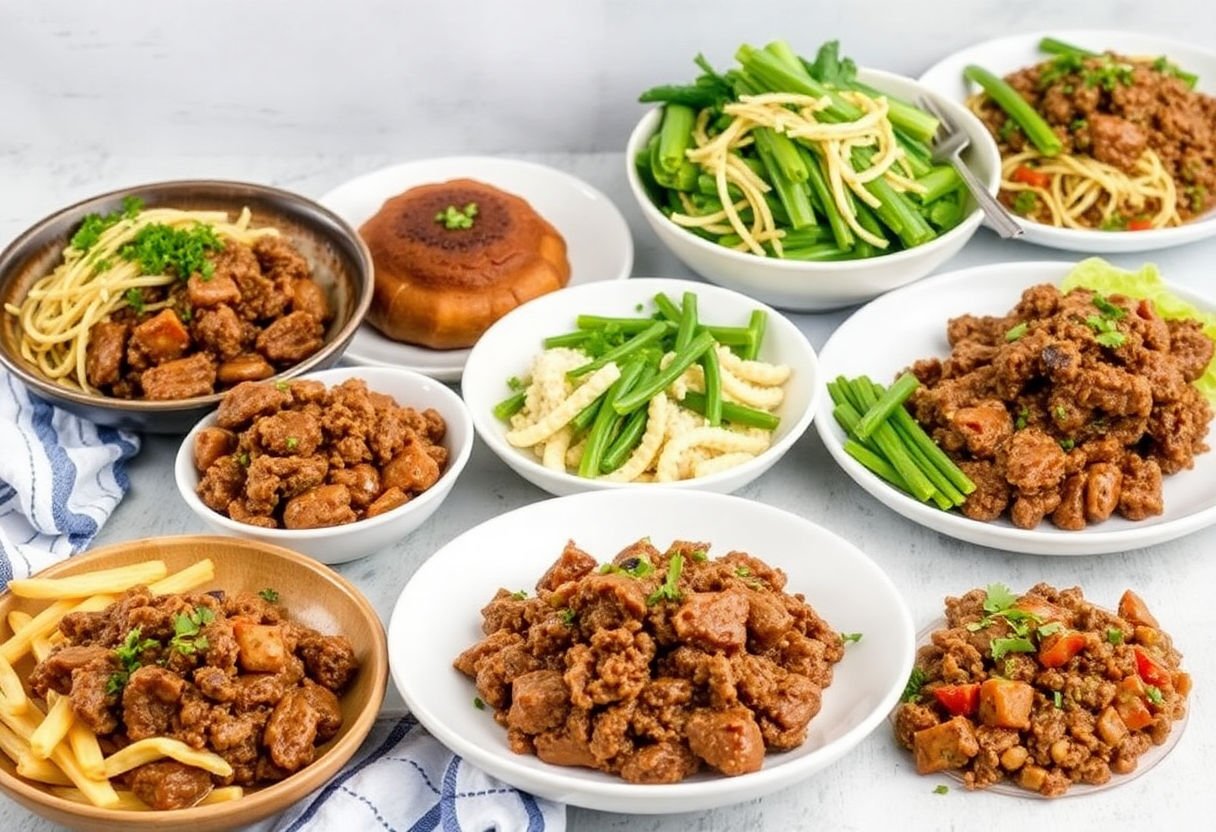
Ground beef is a versatile ingredient that can be transformed into a variety of meal prep recipes, each offering a rich source of protein to help you maintain a balanced diet. Stuffed Bell Peppers are an excellent choice, combining ground beef with cooked rice, black beans, diced tomatoes, and spices, all packed into bell peppers for a colorful and nutritious meal that can be prepped in advance and reheated easily.
Another simple yet satisfying option is Beef and Quinoa Stir-Fry. This recipe involves sautéing ground beef with fresh vegetables like broccoli, bell peppers, and carrots, and then mixing it with cooked quinoa. This dish not only boosts your protein intake but also adds a healthy dose of fiber and essential vitamins.
For those who enjoy classic flavors, Ground Beef Tacos offer a quick meal prep alternative. Cook ground beef with taco seasoning and pair it with whole grain tortillas, fresh lettuce, and a sprinkle of cheese, creating a ready-to-go meal that can be customized to your taste.
Lastly, consider preparing a Hearty Beef and Vegetable Soup. This can be made by simmering ground beef with chopped onions, garlic, mixed vegetables, and beef broth. This soup can be divided into portions and stored, providing a convenient, nutritious meal for the week.
Each of these recipes demonstrates how simple it is to incorporate high-protein ground beef dishes into your meal prep routine, ensuring a variety of flavors and nutrients tailored to your dietary needs.
Time-Saving Meal Prep Tips
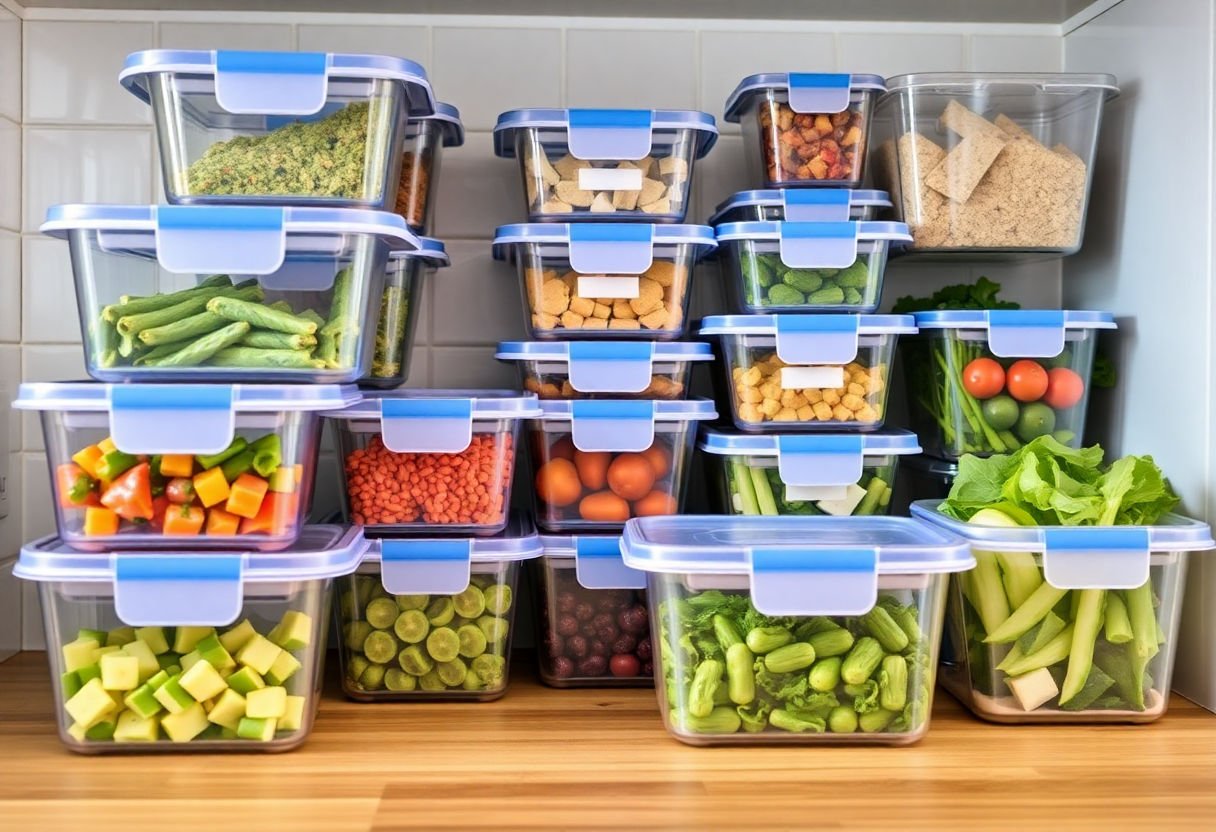
Preparing meals with ground beef for the week can not only be efficient but also a rewarding way to ensure you stay on track with your nutritional goals. Here are some practical tips to make your meal prep quick and effective:
-
Plan Ahead: Start by deciding which recipes you’ll be making for the week. This will streamline your grocery shopping and ensure you have all the necessary ingredients on hand. Planning is the first step to saving time and reducing last-minute stress.
-
Batch Cooking: Cook a large quantity of ground beef at once. Whether it’s browning multiple pounds or creating a base for different meals, batch cooking saves significant time. Once cooked, you can portion it into containers for easy access throughout the week.
-
Invest in Quality Storage: Use airtight containers to store your pre-cooked ground beef. Doing so will help maintain its flavor and freshness for longer. Proper storage also reduces food waste and ensures quick meal assembly.
-
Versatile Seasoning: Keeping your seasoning neutral allows you to adapt the cooked ground beef to various recipes. This adaptability means that a single batch can transform into different meals, from tacos to stir-fries, without additional cooking time.
-
Use Efficient Kitchen Tools: Implements like slow cookers or instant pots can further decrease your prep time. These tools allow for unattended cooking, freeing up time for other activities.
Implementing these strategies not only reduces cooking time but also encourages healthier eating habits by having nutritious meals ready to go.
Ground Beef Storage and Safety
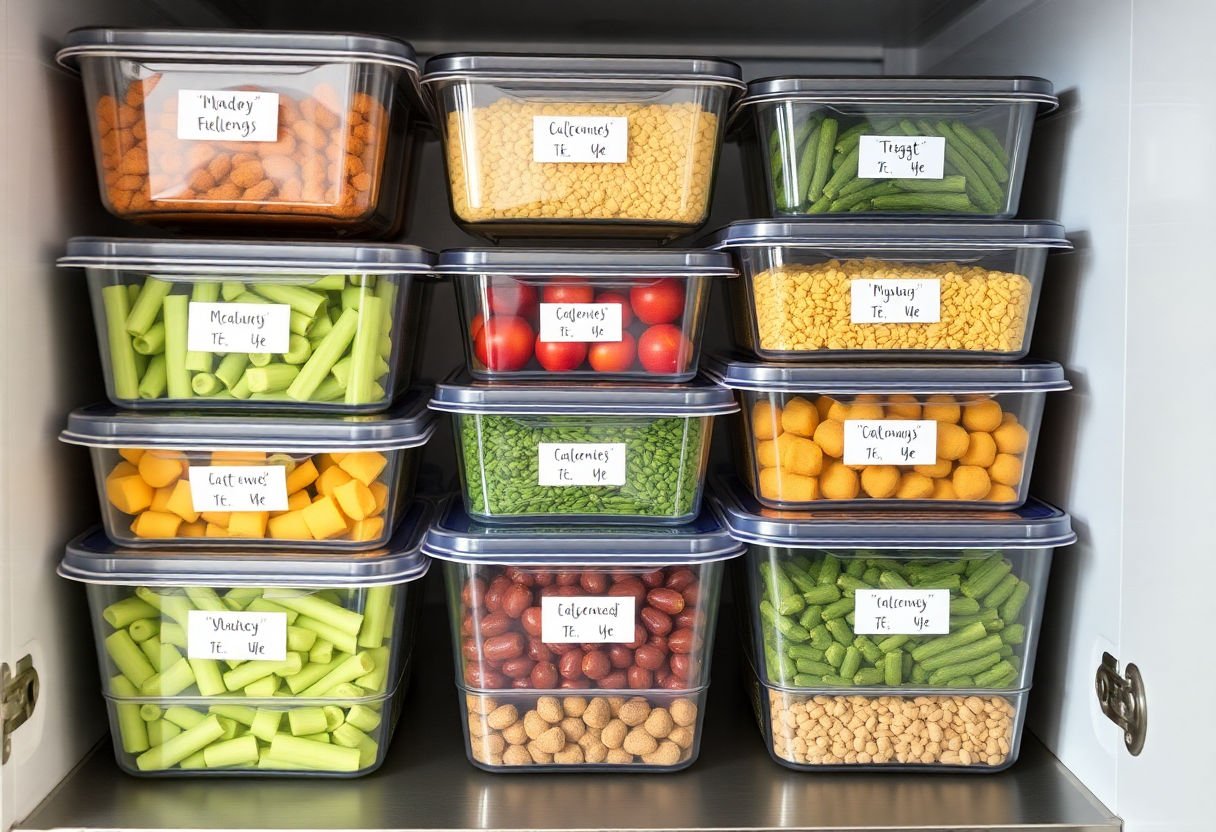
Proper storage and handling of ground beef are crucial to ensuring freshness and safety in your meal prep. To maintain the quality and nutritional value of ground beef, it’s essential to follow recommended storage practices.
Refrigerator Storage: Once purchased, ground beef should be stored in the refrigerator if it will be used within 1 to 2 days. It’s advisable to place it on the coldest shelf, typically near the back of the fridge, to preserve its quality. Ensure that the packaging is airtight or consider wrapping it in plastic wrap or foil to prevent contact with air and minimize spoilage.
Freezer Storage: For longer-term storage, freezing ground beef is a reliable option. To do this effectively, wrap the beef in heavy-duty freezer bags or freezer-safe containers with minimal air space. Label the package with the date of freezing to track storage time, and store for up to 3-4 months for optimal freshness.
Safe Thawing Methods: When ready to use, thaw ground beef safely by transferring it to the refrigerator, allowing it to thaw slowly. Alternatively, if you’re short on time, it can be thawed in a microwave or submerged in cold water. Avoid leaving ground beef to thaw at room temperature, as this encourages bacterial growth.
Food Safety Tips: Ensuring food safety involves cooking ground beef to an internal temperature of 160°F to eliminate harmful bacteria. Always wash hands, utensils, and surfaces after handling raw ground beef to prevent cross-contamination. By adhering to these storage and safety practices, you can confidently include ground beef in your weekly meal prep, maximizing your protein intake while safeguarding your health.
Incorporating Ground Beef into a Balanced Diet
To effectively integrate ground beef into a balanced diet, one must consider variety and moderation. Ground beef, when combined with other nutrient-dense foods, can form the foundation of a wholesome meal plan. Prioritize incorporating lean cuts of ground beef to minimize saturated fat intake, which aligns with dietary guidelines that advocate for lean protein sources.
Creating a diverse meal plan that rotates between different proteins — such as ground beef, chicken, fish, beans, and legumes — ensures a broad spectrum of nutrients. This approach not only highlights dietary variety but also prevents monotony, encouraging sustained healthy eating habits. According to nutritional experts, “A diet rich in diverse proteins supports optimal muscle function and overall health.”
To maintain a balanced diet, incorporate a range of vegetables and whole grains alongside ground beef. These additions provide essential vitamins, minerals, and fibers. Utilize ground beef in dishes such as:
- Stuffed bell peppers filled with ground beef, quinoa, and a medley of vegetables.
- Beef and barley soup, rich in nutrients from vegetables and whole grains.
It is also crucial to monitor portion sizes. A general guideline is to maintain a serving size of approximately 3 to 4 ounces of cooked ground beef, comparable to the palm of your hand, which fits within daily protein recommendations.
By thoughtfully incorporating ground beef in moderation and pairing it with a variety of other nutritious foods, one ensures a well-rounded diet that supports health and wellness.
Creative Alternatives to Traditional Ground Beef Dishes
When exploring new culinary horizons, ground beef offers a canvas for creativity. Transform the humble patty into an inspired masterpiece with innovative techniques and imaginative ingredients.
Ground Beef Skewers
Instead of the usual burger, try threading seasoned ground beef onto skewers. This Middle Eastern-inspired dish, similar to kebabs, is not only visually appealing but also intensifies the flavor profile when grilled. Skewers offer subtle hints of smokiness and depth, enhancing the beef’s natural taste.
Stuffed Bell Peppers
For a colorful and healthful option, consider stuffing bell peppers with ground beef. Combine beef with quinoa or rice, spices, and vegetables, then bake the mixture inside vibrant bell peppers. This technique transforms ordinary ingredients into a flavorful, nutrient-rich meal, making it an elegant presentation for any dinner table.
Ground Beef Lettuce Wraps
Substitute carb-heavy wraps with crisp lettuce leaves for a refreshing twist. Sauté ground beef with garlic, ginger, and soy sauce, and serve it in large, sturdy lettuce leaves. This alternative not only cuts down on calories but also retains all the delicious flavors, providing a light yet satisfying meal.
Beef and Veggie Stir-Fry
Utilize ground beef in a quick and easy stir-fry. Pair ground beef with a medley of colorful vegetables such as broccoli, bell peppers, and carrots. A splash of soy sauce and sesame oil elevates this dish, creating a harmonious balance of flavors that is both nutritious and delectable.
Incorporating these creative alternatives into your ground beef repertoire can significantly enhance your meal prep strategy, offering both variety and nutritional benefits. Embrace these innovations and redefine your culinary experience.
Conclusion
Incorporating ground beef into your meal prep routine is not only a strategic way to maximize your protein intake but also a method to simplify your weekly meal planning. With its versatility and rich nutritional profile, ground beef effortlessly supports a balanced diet while offering convenience and variety. As you explore creative alternatives to traditional dishes, maintain focus on diversity to ensure a well-rounded diet. Embrace these meal prep ideas as a sustainable practice, promising both health benefits and time savings, while remaining open to discovering new flavors and cuisines within this protein-rich staple.
Frequently Asked Questions
How can I ensure I’m consuming the right portion size of ground beef in my meal prep?
When planning your meals, a serving size of ground beef is typically 3 to 4 ounces, which provides a substantial amount of protein. It’s essential to balance this with other nutrients, such as vegetables and whole grains, to maintain a healthy diet.
What is the best method to cook ground beef to retain its nutritional benefits?
Opt for cooking methods like grilling or broiling, which allow excess fat to drain away, thus preserving the lean protein content. Avoid frying, as this can add unnecessary fats and calories to your meals.
Can ground beef be part of a weekly meal prep for those on a weight loss journey?
Yes, ground beef can be included in a weight loss regimen if consumed in moderation and paired with plenty of vegetables and whole grains. Opting for lean ground beef with a lower fat content can help reduce calorie intake.
How long can prepared ground beef meals be stored safely in the refrigerator?
Prepared ground beef meals can be stored in the refrigerator for 3 to 4 days. To maximize freshness and safety, ensure they are kept in airtight containers and at a consistent refrigerator temperature of 40°F (4°C) or below.
What are some creative ways to use ground beef beyond typical dishes like burgers?
Ground beef can be used in a variety of creative dishes such as stuffed peppers, zucchini boats, or in a hearty chili. These options add variety and allow you to enjoy ground beef in different culinary styles.
